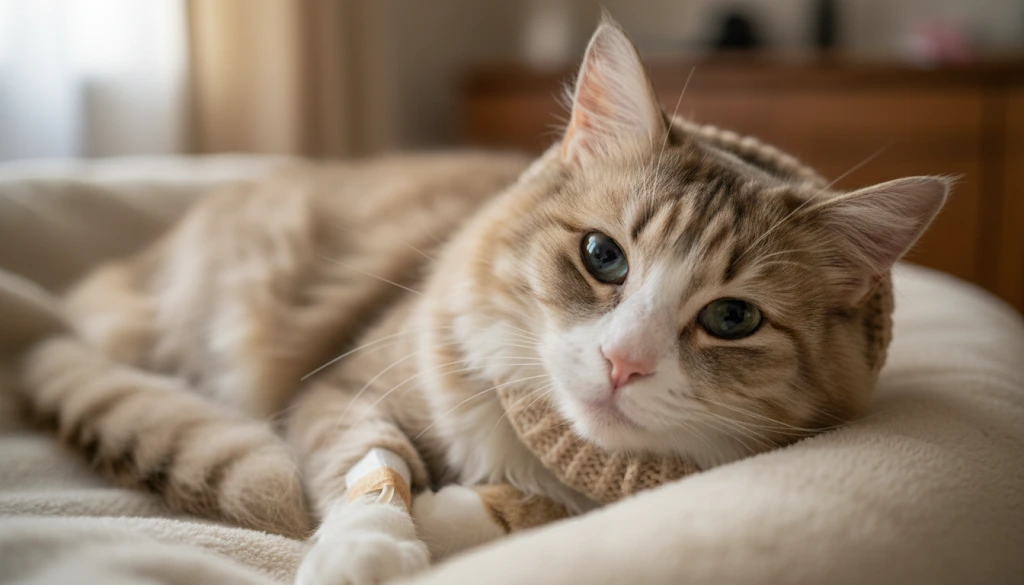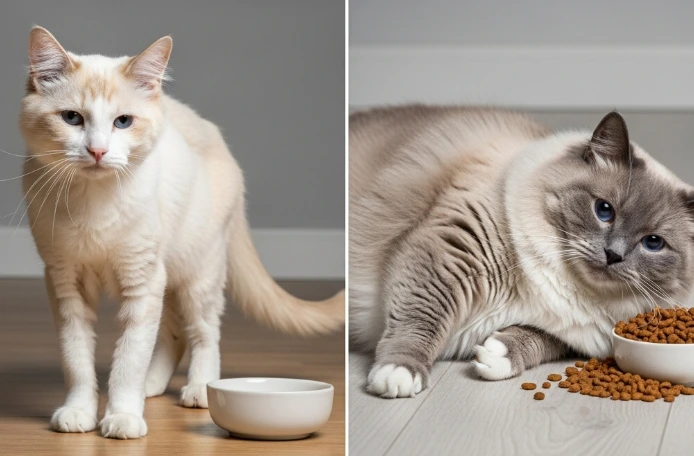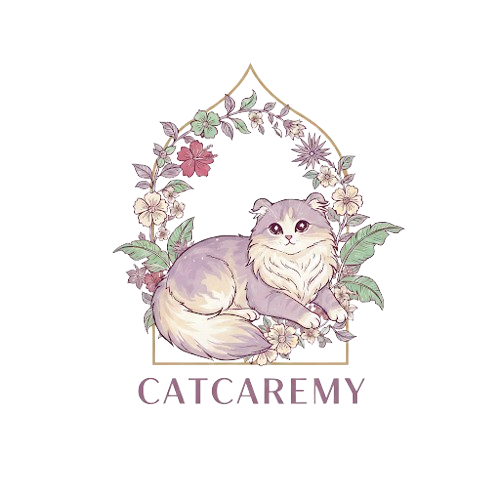
Caring for an older cat isn’t the same as feeding a playful kitten or an active adult. As cats age, their bodies slow down, organs need more support, and their appetite may change. That’s why senior cat nutrition deserves special attention if you want your feline friend to enjoy their golden years.
Why Older Cats Need a Different Diet
Once a cat reaches 7–10 years old, vets usually classify them as “senior.” At this stage:
- Kidney and liver functions may weaken.
- Muscle mass starts to decline.
- Joints become less flexible.
- Appetite can drop due to dental pain or reduced sense of smell.
Without the right adjustments in diet, problems like weight loss, dehydration, and chronic disease can develop more quickly.
For example, I once cared for a 12-year-old domestic shorthair who suddenly lost weight despite eating. The vet found early kidney disease. After switching to wet food for aging cats and increasing hydration, her health stabilized for years.
Key Nutritional Needs of Senior Cats
- High-quality protein: Keeps muscle strong without overloading kidneys.
- Moderate fat: Provides energy but avoids obesity.
- Controlled phosphorus & sodium: Protects kidney and heart function.
- Omega-3 fatty acids: Help with inflammation and joint support.
- Moisture content: Vital for hydration, especially in cats that rarely drink water.
[Senior Cat Nutrition] — Guide to Cat Food Ingredients
Wet vs Dry Cat Food: Which Is Better for Indoor Cats?
Indoor cats are usually less active, so they require controlled calorie intake with nutrient density. Both wet and dry food have roles to play in senior cat nutrition.
Comparison Table: Wet vs Dry Cat Food
| Aspect | Wet Food | Dry Food | Mixed Feeding |
|---|---|---|---|
| Moisture | ~70–80%, supports kidney & urinary health | ~8–10%, risk of dehydration | Balanced if paired correctly |
| Nutrition Density | High protein, low carbs | Often higher carbs, calorie-dense | Can balance hydration & energy |
| Convenience | Needs refrigeration, short shelf life | Easy storage, longer shelf life | Requires planning but flexible |
| Cost (Malaysia) | RM4–7 per pouch | RM20–30 per kg | Medium, depends on ratio |
For indoor senior cats with kidney concerns or poor appetite, wet food usually works better because of its hydration and aroma. But for cats that still have healthy kidneys and need slow-release energy, a portion of dry food is practical. Many Malaysian owners actually prefer a blended routine—wet food in the morning for hydration, kibble at night for convenience. This method isn’t about “pros and cons,” but about tailoring nutrition to your cat’s lifestyle, health, and your household budget.
Malaysian Feeding Habits and Real-World Case
In Malaysia, feeding decisions are often influenced by cost and product availability. According to a 2023 Malaysian Pet Food Association survey, over 65% of cat owners practice mixed feeding (wet food in the morning and dry food at night). The main reasons are:
- Wet food is more expensive: Imported brands like Royal Canin or Hill’s cost RM5–7 per 80g pouch, making full wet feeding around RM12–15 daily.
- Dry food is budget-friendly: Local and international brands such as Whiskas, ProDiet, and Orijen cost RM20–40 per kg and can last 2–3 weeks.
- Shopping habits: Urban owners often buy from Pet Lovers Centre, Jaya Grocer, or online platforms like Shopee and Lazada. In smaller towns, local brands like ProDiet dominate.
One Kuala Lumpur family with two cats over 10 years old shared their routine: mornings with ProDiet Senior Wet Food for hydration, evenings with Royal Canin Senior Dry Food to balance the cost. Their cats maintained healthy weight, and blood tests showed stable kidney function.
This reflects a broader trend: in Malaysia, mixed feeding isn’t just a compromise—it’s a practical strategy combining wet food benefits with the dry cat food pros of convenience and affordability.
Best Wet Cat Food Options in Malaysia
When evaluating the best wet cat food options, look for high moisture, strong animal protein content, and minimal fillers. Popular senior formulas in Malaysia include:
- Royal Canin Aging 12+ Pouches – tailored for cats over 12 years.
- Hill’s Science Plan Senior Wet – formulated for kidney and joint support.
- ProDiet Senior Wet Food – affordable local choice, especially tuna-based.
- Brit Care Senior Chicken & Rice – gentle on sensitive stomachs, available online.
Industry data shows that wet food sales in Malaysia grew 18% year-on-year in 2024, largely because owners became more aware of hydration benefits for senior cats.
Dry Cat Food Guide for Senior Cats
Kibble can still play a role in an older cat’s diet. Here’s a closer look at popular options:
- Royal Canin Senior Consult – designed for cats with early signs of aging.
- Orijen Senior – grain-free, protein-rich formula with natural ingredients.
- Whiskas 7+ Dry – widely available, though with more fillers.
- ProDiet Senior Dry Food – local, taurine-enriched for heart health.
Tip: Always keep a water fountain nearby to encourage drinking. Many Malaysian cats live in warm indoor environments, which makes hydration even more critical when feeding kibble.
Feeding Tips for Senior Cats
- Frequent smaller meals — easier on digestion.
- Warm wet food slightly — enhances aroma, especially for picky eaters.
- Use elevated bowls — reduce strain on stiff joints.
- Store food properly — in hot Malaysian weather, don’t leave wet food out longer than 2 hours.
- Vet visits every 6–12 months — diets should adapt as health changes.
[Senior Cat Nutrition] — Senior Cat Health & Care Guide
Weight Management in Senior Cats: Obesity
Senior cats face two extremes: too much weight (obesity) or muscle loss. Both shorten lifespan if not managed properly.
According to the Association for Pet Obesity Prevention (APOP), over 55% of cats aged 10+ in the U.S. are overweight or obese. While Malaysia doesn’t publish nationwide cat obesity data, local vets often report similar issues—especially in urban homes where cats live indoors with limited activity.

| Condition | Signs | Feeding Strategy |
|---|---|---|
| Obesity | Sagging belly, difficulty jumping, heavy breathing | Switch to high-protein, lower-fat diets; measure portions; encourage light play |
| Muscle Loss (Sarcopenia) | Spine and hips more visible even if weight seems “normal” | Increase animal protein + omega-3; feed smaller, frequent meals |
Checklist for Malaysian Cat Owners
- Use a Body Condition Score (BCS) chart instead of just weighing your cat.
- Weigh monthly—many clinics in Kuala Lumpur and Penang offer free weight checks.
- Limit anchovies (ikan bilis) or fried fish snacks, which are high in salt and calories.
- Encourage movement with climbing trees or simple cardboard boxes, especially for indoor cats in apartments.
Tip: Don’t just “cut food” to fight obesity. Senior cats need nutrient-dense meals that preserve muscle mass while preventing fat gain.
Dental Health and Nutrition for Senior Cats
Dental problems are one of the most overlooked barriers to proper nutrition in older cats. Gum disease, tartar buildup, and missing teeth make chewing painful, leading to reduced food intake and poor absorption.
The American Veterinary Dental College (AVDC) reports that over 70% of cats develop dental disease by age 3—which means most Malaysian senior cats are already affected. In fact, local vets often note that feeding dried anchovies or small fish (common treats in Malaysian households) accelerates tartar buildup.
Warning Signs of Dental Problems
- Licks only gravy, leaves solids behind.
- Drops kibble or chews on one side.
- Persistent bad breath or drooling.
Mistakes to Avoid
- Offering ikan bilis or bone-based snacks.
- Relying solely on kibble for “teeth cleaning.”
- Delaying dental check-ups until eating becomes difficult.
| Feeding Option | Why It Helps |
|---|---|
| Soft wet food | Gentle on gums, easier to chew |
| Slightly warmed meals | Boosts aroma, stimulates appetite |
| Dental-care kibble (limited use) | Supports oral health if cat can still chew |
Tip: Warm wet food to body temperature (~37°C). Malaysian owners often notice that cats with sore teeth respond much better to food when it smells stronger.
Mistakes to Avoid
- Assuming all “senior formulas” are the same—always check labels.
- Overfeeding dried fish or salty treats, common in Malaysian households.
- Ignoring changes in weight or appetite, which can indicate early disease.
Final Thoughts
Senior cat nutrition is about more than filling the bowl—it’s about preventing disease, protecting organs, and giving your cat comfort in their golden years. Whether you prefer wet, dry, or a combination, the best diet for older cats is always personalized to their health and lifestyle.
When in doubt, consult your vet. Trusted resources like [MSAVA] provide reliable guidance. By combining expert advice with local brands such as Royal Canin, Hill’s, ProDiet, and Orijen, Malaysian cat parents can give their pets the healthiest possible aging journey.
Common Concerns on Senior Cat Diet & Health
How do I know if my senior cat is eating enough?
Many owners confuse “cat eats less” with “not enough food.” Senior cats often eat smaller, frequent meals. The key is to monitor body weight, body condition score (BCS), and muscle condition score (MCS) rather than just food volume.
Can homemade diets work for senior cats in Malaysia?
Homemade chicken, fish, or rice-based meals are common here, but they’re often deficient in taurine, calcium, and vitamins. Long-term feeding without supplements can cause heart disease or blindness. If you prefer homemade diets, consult a vet for balancing with supplements.
Is milk safe for older cats?
Many Malaysian owners still offer milk. But most adult cats are lactose intolerant, and senior cats have weaker digestion. Stick to lactose-free cat milk if you want to use it as a treat.
Do senior cats need grain-free food?
Grain-free isn’t automatically better. What matters more is digestibility and protein quality. For cats with kidney or digestive issues, veterinary diets (e.g., renal or gastrointestinal formulas) are safer choices than generic grain-free.
How often should a senior cat visit the vet?
Vets recommend check-ups every 6 months for cats over 7 years. Senior cats are prone to kidney, thyroid, and dental diseases that progress silently. Early detection is the best prevention.

[…] making nutrient-dense and easy-to-digest meals essential. 👉 Check our guides for kitten food, senior cat nutrition, and sensitive stomach […]
[…] Best Cat Food for Senior Cats in Malaysia […]
[…] 🔗 See full [Senior Cat Food Malaysia Guide] […]